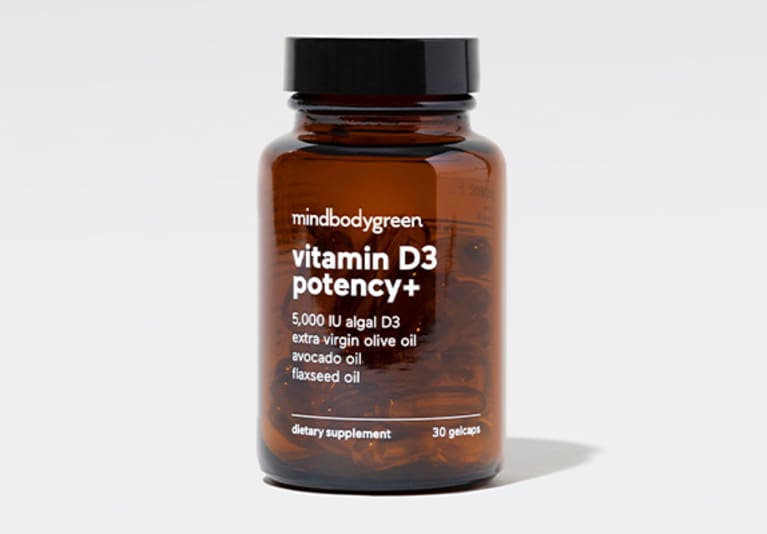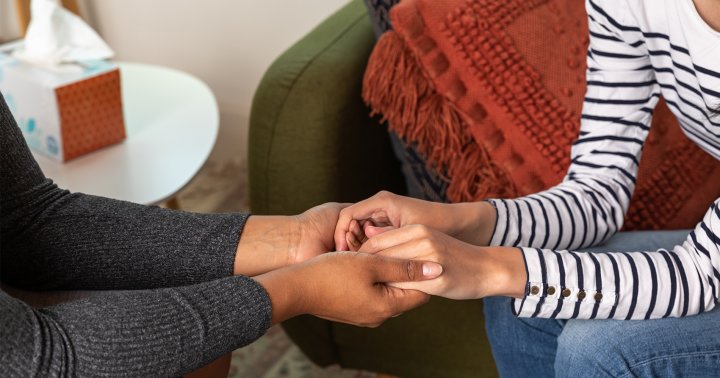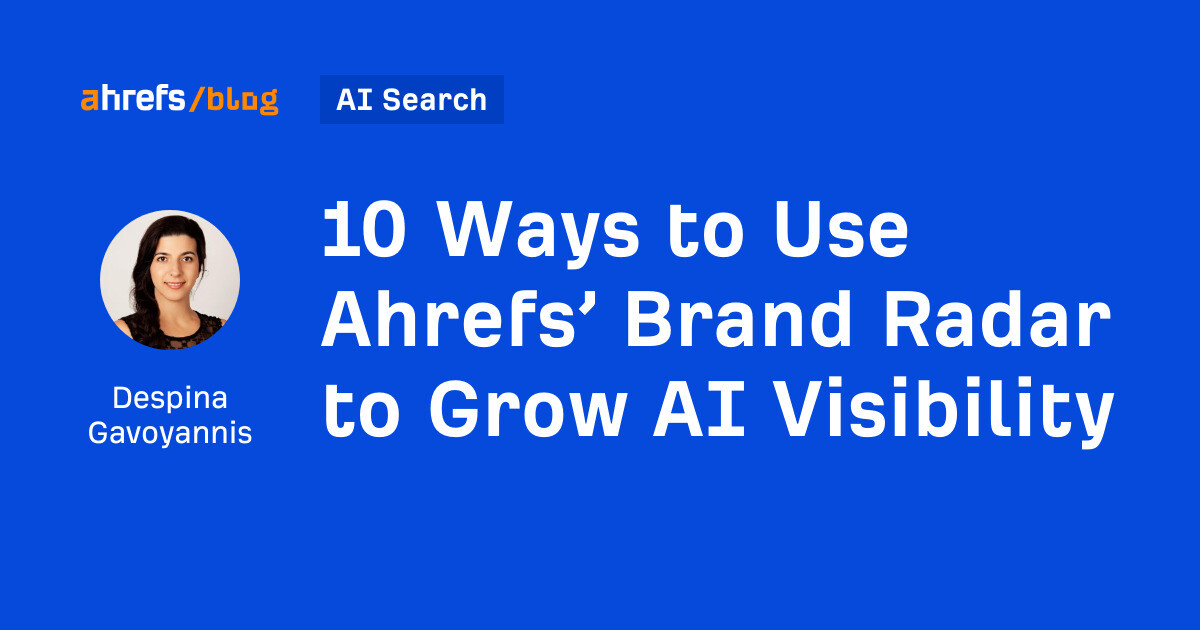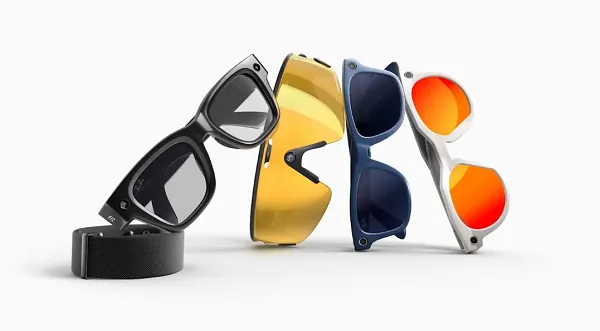How To Get The Vitamin D You Need: The Truth About Sunlight & Supplements
It might be time to adjust your approach.


September 16, 2021 — 9:05 AM
Vitamin D is an essential nutrient—but many (most) people don’t get enough of it. In fact, research has shown that 93 to 100% of Americans fail to consume just 400 IU from their diet each day. Further, almost half the population in the U.S. is insufficient in the sunshine vitamin (considering all inputs from sun, diet, etc.!), which just really isn’t great news for our overall health.
If you’re one of those people—and, well, there's a pretty good chance you might be—it’s important to do what you can to get more vitamin D in your life. Here’s what you need to know about this crucial vitamin—and how to get your levels up (and stay up).
What is vitamin D and what are the benefits?
Vitamin D is a fat-soluble vitamin and hormone (in its active form) that helps your body absorb and maintain homeostasis of calcium and phosphorus, major building blocks needed to create and maintain strong bones and teeth.* Ample vitamin D also allows these minerals to function properly in your muscles so they can contract and relax properly.*
That's not all, either. The sunshine vitamin also supports the body's response to inflammation, promotes cell growth, and is critical for immune function.*
Without ample vitamin D (more on that in a second), a variety of different body systems struggle to function optimally.*
How much vitamin D do you need?
Vitamin D needs are more nuanced than you might think. As mbg's director of scientific affairs Ashley Jordan Ferira, Ph.D., R.D.N. explains, "The question of daily vitamin D needs is directly informed by your vitamin D status, measured via serum 25-hydroxyvitamin D from a blood test, or for short, 25(OH)D."
The National Academies recommends a cutoff of 20 ng/ml for sufficiency, while The Endocrine Society more vetted the science and recommended a 30 ng/ml cutoff. As Ferira expounds, "to be clear, these cutpoints are numbers to avoid. In other words, you want to exceed 30 ng/ml daily for most of your life to reap the full benefits of vitamin D for health."* In fact, a vitamin D less than 20 or 30 ng/ml is associated with suboptimal bone density (not something to mess with).
To support your personal health, you'll want to get familiar with your 25(OH)D levels, which means asking your healthcare provider for this simple blood test. This is the clinical measure of your whole-body vitamin D status—and necessary information if you want to track your baseline status and watching how optimizing your vitamin D intake makes a significant impact.*
vitamin D3 potency+
Yourr daily D essential: bones, muscles, immunity, whole-body*

Brittany Henderson, M.D., a board-certified endocrinologist who specializes in hormones (including vitamin D) in her clinical practice, she shares that "achieving optimal serum 25(OH)D levels in the 50+ ng/ml range is imperative for immune health, bone health, and more."*
Now, here's where things get interesting: Research shows that 100 IU of vitamin D3 (which is the body's preferred form) per day raises 25(OH)D levels in the average (healthy weight) adult by 1 ng/ml. So, if you want to hit 50 ng/ml, 1,000 or 2,000 IU of vitamin D per day won't get you there; in fact, they won't even get you close. Based on this science, you'd need closer to 5,000 IU per day to reach the optimal range.*
What are the main sources of vitamin D?
Given how much vitamin D the average person really needs to hit the sweet spot for their health and wellbeing, it's a feat that's seriously difficult to achieve through food and sunshine alone.* Here's what to know about the three different ways you can score more of the important nutrient.
“Vitamin D is found in very few foods—and the foods that it is found in do not have amounts that will move the needle much in terms of total amount humans need for health,” says integrative dietitian Whitney Crouch, R.D.N., C.L.T.
Sina Gallo, Ph.D., R.D., associate professor of nutritional sciences at the University of Georgia, agrees: “It's difficult to meet the requirement for this vitamin through diet alone.”
To give you a sense of what you're working with (and why folks aren't hitting 5,000 IU per day from food alone), the following foods are the best sources of vitamin D out there:
The reason vitamin D is called the sunshine vitamin? You can get it from sunlight. “Cutaneous [skin] production of vitamin D occurs when the sun is higher in the sky, as in summer, and the skin is exposed as long as it is not too heavily pigmented,” says Connie Weaver, Ph.D., a professor in the Department of Nutrition Science at Purdue University.
One major caveat here: Getting enough vitamin D from sunlight risks exposing yourself to unsafe skin practices. “You can try to get some [vitamin D] naturally by being exposed for five minutes before applying sunscreen, but the length of time can be affected by individual differences,” Gallo says. (Read: Depending on your skin tone, you may need more sun exposure than is ultimately unsafe in order to produce the amount of vitamin D you're after.)
There are other factors to consider, too, including the time of day you’re out in the sun, the season, how much of your skin is exposed, and the latitude you live at. All of these impact your ability to get ample vitamin D from that golden sun. And, of course, lifetime sun exposure is something to be prudent about overall.
Now, if meeting that optimal vitamin D intake means eating 18 ounces of trout each day (i.e., six servings of this fish) and relying on the sun is a bit of a crapshoot, what options does that leave you with if you want to ensure you're getting enough of the sunshine vitamin (every day for decades) to feel your best? Well...supplements.*
Here's what to look for: First, go for vitamin D3 (cholecalciferol), which, as Gallo explains, is the form our skin produces from sun exposure. It's also been shown to be the the most effective at raising and maintaining our 25(OH)D levels (your status biomarker). Next, look for a high-potency option that provides at least 5,000 IU so that you're getting enough to hit 50 ng/ml+ goal for 25(OH)D. Folks with more fat tissue (i.e., overweight or obese), will require two to three times more vitamin D to achieve the same serum status, according to science and clinical consensus.
Ideally, Crouch recommends looking for a vitamin D3 product that comes in a formula that combines it with a healthy fat. This way, you can take the supplement with or without a meal. (Since vitamin D is a fat-soluble vitamin, it needs some fat in order to be absorbed properly.)* In fact, mindbodygreen specially formulated our vitamin D3 potency+ product to check all of these important boxes, and then some. Otherwise, you'll want to make sure to take your vitamin D supplement with a snack or meal that contains a source of fat.
Since relying on food and sunshine for vitamin D alone just doesn't cut it, adding a high-potency supplement to your routine is the ideal way to ensure you meet your needs.* Talk to your doctor about testing your levels, so that you can establish your baseline and feel good about the improvements your supplement regimen is achieving.* And you'll want to look for a quality vitamin D3 supplement that provides at least 5,000 IU of vitamin D3 and make sure you're downing it alongside some healthy fat.*

vitamin D3 potency+
Your daily D essential: bones, muscles, immunity, whole-body*
vitamin D3 potency+
Your daily D essential: bones, muscles, immunity, whole-body*

https://www.mindbodygreen.com/articles/how-to-get-vitamin-d-from-sunlight-food-and-supplements

 BigThink
BigThink 































